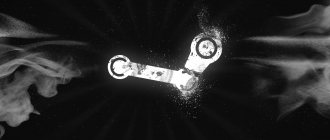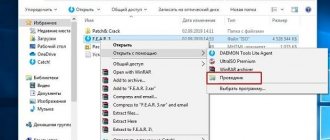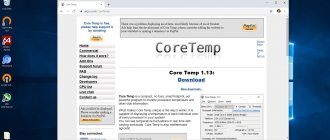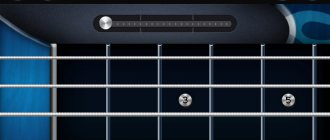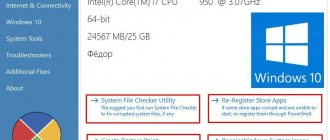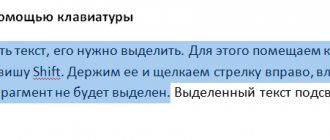Absolute silence exists only in outer space. In most modern cities, residents have to live in conditions of greater or lesser noise levels, depending on the development of industry and the characteristics of the transport system.
If you live in conditions of environmental noise pollution, the risks of a number of diseases, although not always related to the hearing organs, increase significantly. Therefore, it is worth knowing how to measure the noise level in an apartment using equipment that is always at hand, for example, a microphone and a computer.
These simple measurements will allow you to determine whether there is a need to fight to reduce it, or whether living conditions can already be considered comfortable.
What is noise and how does it affect the human body?
By noise we usually mean random sound vibrations that vary in frequency and intensity (however, from a physiological point of view, any sound that is perceived negatively can be considered such).
Sources of loud sounds are conventionally divided into:
- Mechanical.
- Hydraulic.
- Aerodynamic.
- Electrical.
Initially, it was assumed that excessive noise in the workplace or home only affected hearing function. However, the spectrum of action of sound waves turned out to be more multifaceted.
The nervous system and cardiovascular system are especially vulnerable to the effects of sound; also, increased sound pollution can provoke an exacerbation of almost any chronic disease.
Ways to deal with noise
In factories, airports and other noisy workplaces, it is necessary to not only measure but also control the amount of noise workers hear to protect their hearing and prevent hearing loss. Noise not only impairs hearing, but also makes it difficult for people to concentrate. This interferes with their work and exposes them to additional danger because if they are not careful, they may not hear the alarm due to the noise, which could lead to an accident. In addition, it is unpleasant to be and work in a noisy room, so the sound is also controlled for the comfort of workers. It is not always possible to use a sound level meter. In such a situation, a simple rule applies: if you have to shout in order to be heard, this means that the room is too noisy, and this noise needs to be reduced.
There are two main ways to deal with noise: noise insulation or noise reduction using counteracting noise. The first method is passive, and the second is active. Which of the two methods to use is decided depending on the situation, and sometimes both are used at once. You can also use several methods of passive noise reduction or noise blocking at the same time. For example, airport ground maintenance teams often use earplugs and passive noise-canceling headphones at the same time.
Sometimes factories and factories also use sound absorbers. They prevent sound from being amplified in the room and reflected from walls and other surfaces. For this purpose, sound absorbers are made from materials that absorb sound well.
Passive Noise Cancellation
For passive noise reduction, materials that absorb sound well are used. Most of the above tips for reducing noise in an apartment are based on this principle. The sound-absorbing materials used in headphones are foamed polymers.
Active Noise Canceling Headphones
Active Noise Cancellation
Active noise cancellation can reduce ambient noise by about 20 decibels. The principle of active sound cancellation is that an incoming sound wave is canceled by an outgoing sound wave with the same amplitude but opposite phase. The outgoing noise is generated by headphones.
Airport worker wearing noise canceling headphones. Lester B. Pearson International Airport in Toronto (YYZ, English Pearson International Airport), Canada.
What happens to sound in this case can be demonstrated using the example of a swing. When one person pushes the swing forward, and another, with the same amplitude, begins to swing it back, then these pushes will be in antiphase. When two waves are out of phase, their total sum is zero. That is, in the case of a swing, it will stop swinging.
To properly block sound, noise canceling devices must first detect the amplitude and frequency of incoming sound waves so they can then create similar waves in antiphase. Such devices work well with monotonous, repetitive sound that is easy to predict. If the sound is spontaneous and changes all the time, then noise-cancelling devices are ineffective. Incoming audio is received by devices such as headphones using the built-in microphone. In addition to the cockpits of late-model automobiles and consumer headphones, active noise cancellation is used in some protective headphones for airport workers.
Noise sickness
Noise disease refers to a pathological condition somewhat reminiscent of cochlear neuritis. The characteristic manifestations are considered to be the first appearance of tinnitus (ringing in the ears), and later a gradual decrease in hearing.
However, this disease is not limited to damage only to the function of the auditory analyzer.
The following symptoms may also be of concern:
- A constant feeling of heaviness in the head, periodic episodes of dizziness for no reason.
- There may also be complaints of increased fatigue and irritability, sleep disturbances, memory loss, and problems with concentration.
- Often such patients complain of discomfort in the chest, a feeling of palpitations or interruptions in the functioning of the heart.
- Blood pressure and heart rate are often labile.
Electrocardiographic examination rarely detects any abnormalities. If they are recorded, then most often these are either disturbances of intraventricular conduction, or sinus arrhythmias or tachycardia/bradycardia.
A neurological examination may reveal tremor of outstretched fingers and/or eyelids, some depression of tendon and abdominal reflexes, and sensitivity disorders are often detected, primarily in the distal parts of the extremities.
Disorders of the endocrine system and disturbances of vegetative-vascular reactions can manifest themselves in the form of cold hands and feet, distal hyperhidrosis, hyperfunction of the thyroid gland.
The clinical manifestations of the so-called noise disease are quite varied, and in cases where, when collecting an anamnesis, the moment of living or working in conditions unfavorable in terms of sound pollution is missed, then the correct diagnosis may not be established, and treatment will be limited to symptomatic therapy (which without eliminating the cause ailments is quite ineffective).
How to measure the noise level in an apartment yourself using a microphone and a computer or telephone
Before measuring the noise level using a microphone and a computer, it would be a good idea to clarify that the microphones of headphones, phones or laptops are not designed to measure sound intensity, and their readings are likely to differ significantly from the numbers produced by professional equipment.
The data obtained using various programs should be considered indicative (most non-specialized microphones produce a lower value than it actually is).
An online sound level meter for a PC is quite a rarity; most of these programs must be installed on your computer to work correctly.
There is a lot of similar software on the Internet, but it is worth considering the operating system of your computer. So, in the case of Windows, Audacity, which has a function for measuring the strength level of sounds, is quite popular.
For Mac OS devices, you can download the free Decibel Reader program from the AppStore, which can measure sound intensity levels.
It is also possible to measure the noise level using your phone using programs designed for this.
In the case of smartphones, the choice of a specific program also depends on the operating system of the device:
- In the case of Apple products: Decibel 10th or Decibel Meter Pro, dB Meter, Sound Level Meter.
- The following applications are suitable for the common Android operating system: Sound Meter, Decibel Meter, Noise Meter, deciBel;
- Smartphones running Windows can be considered a rarity, however, you can also find software suitable for such measurements: Decibel Meter Free, Cyberx Decibel Meter, Decibel Meter Pro.
It is important to consider that this method of measuring sound levels is not particularly accurate, and depends not only on the correct operation of the software in each specific case, but also on the quality and technical condition of the microphone used.
Noise Detector
A multifunctional service focused on measuring sound levels and propagated noise. The developers from Tools Dev offer to work with the Noise Detector application in a free mode and even without advertising, the main thing is to immediately understand the rules and conditions, and then start taking measurements. In Noise Detector, the focus is again on sound intensity, and therefore the only name for all tests is decibels.
You might be interested in: TOP essential Android apps for couriers
Noise Detector measures sounds up to a volume of 140 dB - a jet plane or a firecracker explosion will immediately fall into the statistics and become part of the collection. However, you should not count on maximum accuracy - the service often makes mistakes and sometimes does not notice those things that prevent you from falling asleep.
A special device for measuring the strength of sounds
Programs for PCs and smartphones do not allow you to determine the noise level with sufficient accuracy to make any conclusions. This requires special equipment.
Such a device is called a sound level meter and consists of an omnidirectional microphone to which is connected a voltmeter calibrated to measure sound pressure in decibels.
The signal is also passed through special filters before entering the voltmeter, which correspond to different intensities and frequencies of sound for a more accurate assessment.
The objectivity and accuracy of the information obtained using special applications is questionable, therefore, after an approximate assessment using a telephone or computer microphone, a sound level meter is also required.
Only the readings of such a device can be used in, for example, legal proceedings regarding neighbors or a nearby enterprise exceeding the maximum permissible sound level values during the day and night.
Noise Measurement Applications
Let's look at the most popular sound level meters for Android so you can determine which one is best to download:
- The application from EXA Tools can do the following:
- measure the level of sound and vibration;
- show results in the form of text, where the minimum, average or high value is noted, as well as in the form of a graph (units of measurement - decibels);
- adjust the accuracy using manual and automatic calibration; it is recommended to do it immediately after installing the application - the function is in the “Settings” section.
- From Splend Apps. Convenient software for measuring noise levels: shows the results on a graph and on a visualization of an analog device. The developers honestly warn that values above 90 dB may be inaccurate because the phone's microphone is tuned to the person's voice and limits the perception of very loud sounds. This applies not only to this application, but to all others.
- From Melon Soft. A fairly accurate application for determining the sound strength in a smartphone. It is possible to adjust to a reference parameter, where the number of decibels is already known. The data is displayed on a histogram and a digital device with a scale. Audio recording can be interrupted and resumed. It is also possible to change the appearance of the interface.
- From ABC Apps. Prompts to enter a reference value for each individual device. Just like previous applications, it displays data on a graph in decibels. The developers explain that the measurements obtained have an error; if accuracy is needed (for example, to check the sound insulation of a room or to hold a neighbor accountable for disturbing the silence), it is better to use a real sound level meter.
- From Lesmartlab. Application in Russian. Helps measure noise levels in the range of up to 100 dB and offers:
- reconciliation against already known parameters;
- spectrum analyzer;
- sound meter
- The developer advises using the software to check household music speakers or soundproofing of a car - here his information is most accurate, because the phone’s microphone can accurately convey these sounds. There is also a table explaining how many decibels are characteristic of a particular phenomenon, device, person, etc.
To use any of the applications, just do the following:
- download it from Google Play;
- allow access to the microphone;
- follow the setup instructions (if pre-calibration is required, it is better not to skip this step);
- press the start recording button - for all applications it is highlighted in some way: size, color, “Play” icon, etc.;
- wait for the calculation results.
What noise is acceptable in an apartment at night and during the day?
There are standards regulating the maximum permissible level of sound pollution in residential premises both during the day and at night (accordingly, for industries associated with loud sounds there are also standards that differ significantly from those for apartments and houses).
During the day, the level inside a living space should not exceed a level of forty decibels; accordingly, at night this value should be even lower - no more than thirty decibels, which is primarily due to the fact that in the dark the role and amount of information received through the organ of hearing increases, Accordingly, sensitivity to sounds increases.
How to measure the noise level in an apartment
You can measure the noise level from your neighbors yourself using a sound level meter. The price of a device for measuring noise in an apartment starts from 3,500 rubles.
With its help, you can take noise measurements at different points in the apartment and display the average value. Computer programs are also used - they can measure online the noise level in the apartment.
However, if you measure the noise level in an apartment yourself, the data obtained will not be official and will not be used as evidence.
Therefore, it is better to contact Rospotrebnadzor: in this case, noise measurements in the apartment will be carried out with professional accuracy and can be used to contact the necessary authorities.
Among those who measure the noise level in an apartment: forensic experts, design and survey organizations that do this by court order.
If Rospotrebnadzor measures the noise level in an apartment, the price list is as follows:
- on-site visit during the day 5,000 rubles;
- at night 10,000 rubles;
- measured at one point no higher than 500 rubles (but several measurements are taken).
You also need to take into account that the total cost of the entire inspection will be much higher (up to 30,000 rubles in Moscow), since in addition to the measurement you will need to pay for an additional fee:
- draw up an act or protocol;
- draw up a conclusion for the court.
But if the process is won, all costs incurred, including legal costs, will be compensated by the defendant.
